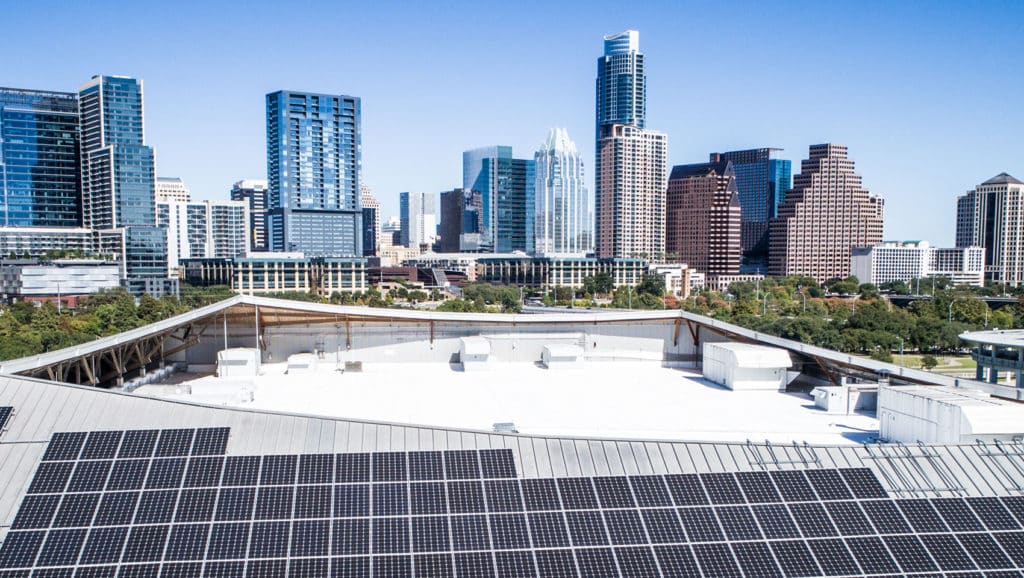Commercial Solar
Modern technologies are forcing people to keep up with the times. So is with solar panel system. Nowadays, more and more people tend to switch to this eco-friendly energy source that promises electricity tax reduction to zero and no-carbon-emission power production. Since we are currently facing many hardships connected with global climate changes, renewable energy consumption is highly recommended and encouraged by the US states. The most straightforward reason and interconnection is that the manufacturing industry is one of the most significant sources of global warming. The latter is the result of the so-called greenhouse effect caused by massive production worldwide. The installation and maintenance of solar panel kits on commercial buildings can greatly contribute to the reduction of the greenhouse effect.
Thus, car production companies take the first position as the world’s largest manufacturing field, then comes clothes’ production, and so on. All these companies use massive gigawatts of energy daily, which has a tangible negative impact on the environment. The transition to alternative energy consumption will significantly improve our climate conditions. Another not less motivating reason for switching to solar is the capital. It is not a secret for anyone that this energy consumption method reduces monthly electricity taxes to zero, and consumers have permanent electricity available without any payment. Commercial solar panel installation is an excellent solution. It provides many opportunities and can also have some challenges for the user. Despite the challenges, your photovoltaic system can be a considerable investment into your business. But, before going solar, you should consider all the details and what exactly you can expect from your renewable energy source.
Challenges
Not to scare you in advance, mind that any changes assume challenges you must overcome with the expectations of a great outcome. There are several issues you should research on and make appropriate choices. These issues may be concerning budget and finance, paybacks, layout and design, system monitoring or various devices. The process of solar panel installation for commercial buildings requires documentation terms and conditions’ research as well. To ensure maximum paybacks and return on investments, it is recommended to make a cash purchase in advance rather than sign a PPA (Power Purchase Agreement) or Leasing Agreement. The two latter are convenient options for business owners who don’t plan initial expenses but want to switch to solar energy consumption. However, with a cash payment or payment with bank credit, you become the system owner, not the third person or the solar panel installation company. And since the PV system mounted on your commercial building belongs to you and your building, this fact will add tangible value to your building. In case you decide to sell it in the future, you will be paid both for the building and the photovoltaic system attached to it.
In this aspect, you need to know first and foremost that your commercial PV system installation requires initial costly expenses. Depending on your system size, you may have to pay from $50,000 – $500,000 with the approximate calculation of $1,000 – $1,300 per kW. The above-mentioned cost of solar panel installation is conditional, depending on the system connection you choose. Thus, if you choose a large central inverter for your whole PV system, it will cost you less than the micro-inverter connection. However, as practice shows, the latter is preferable for a number of reasons. With micro-inverters, your system will be more reliable and perform better. The better performance is due to the type of connection. With micro-inverters, each of the photovoltaic modules is connected directly to its inverter. If any of the panels malfunctions, this will not result in the overall performance of the array. With these devices installed, it is also easier to perform monitoring and diagnoses of possible problems, to detect the exact location of the problem and solve it. The disadvantage of this type of connection is that it takes longer to install, and it significantly raises your commercial solar panel installation price.
The system design and layout are also a challenge first for the commercial building you plan to mount it on. If an average residential installation requires approximately 10-12 PV modules’ installation on a rooftop, with commercial buildings, the number of these modules can reach several hundred if not more. With all the aluminum racking, the array is sure to put huge pressure on your rooftop. Hence, before any installation, appropriate specialists must double-check your roof reliability to ensure system durability and safety. Most solar panel installation contractors will provide you with the necessary specialists to perform roof durability diagnoses. In case your building’s roof doesn’t meet the required standards to have a commercial photovoltaic system installed on it, ground-mounted installation is another option you can use. In fact, most of the solar plants worldwide are ground-mounted. This type of installation does not demand many limitations; the first and most vital requirement is the absence of shade on the panels.
Opportunities
According to Forbes’ forecasting, due to the coronavirus pandemic, the rates of commercial solar transitions have dropped by 32 percent compared to the pre-pandemic forecast of 2020. Despite this fact, the commercial solar potential is obvious. From 3-5 percent of commercial solar buildings already run on solar energy.
About 70 percent of the US buildings can be counted for commercial since not all the buildings spend so much money on electricity to switch to solar. That is about 145 gigawatts of solar energy. To have a better idea of what I’m talking about, it is enough to say that the largest US operating scale is only 0.5 GW. The reason that commercial solar doesn’t proliferate is also the absence of standardized financing compared to residential solar.
So, if you consider installing a solar panel kit on your commercial rooftop, take into account all the potentials, challenges and benefits it will provide you.
Author of a publication: Helen Kocharyan




